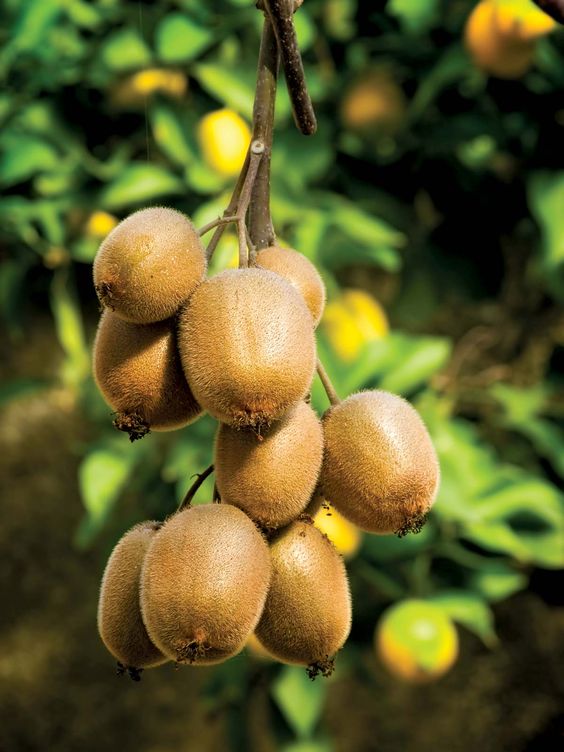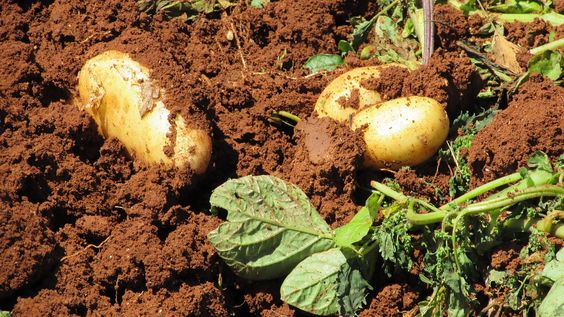Optimizing Plant Kiwi Production: A Guide to Smart Agriculture for Kiwi Growers
Plant Kiwi, also known as Chinese gooseberries, are a delicious and nutritious fruit enjoyed worldwide. However, kiwi cultivation can be challenging due to factors like climate sensitivity, disease susceptibility, and labor-intensive practices. Smart agriculture technologies offer innovative solutions to these challenges, enabling kiwi growers to optimize production, improve fruit quality, and enhance profitability. This comprehensive guide explores how smart agriculture can revolutionize kiwi farming by integrating data-driven decision making, automation, and precision agriculture techniques.
Contents
- 1 Benefits of Smart Agriculture for Kiwi Growers
- 2 Objectives of Smart Agriculture in Kiwi Production
- 3 Explanation: Key Smart Agriculture Technologies for Plant Kiwi Farming
- 4 Implementation: Practical Steps for Integrating Smart Agriculture in Kiwi Orchards
- 5 Challenges and Considerations
- 6 The Future of Smart Agriculture in Plant Kiwi Production
Benefits of Smart Agriculture for Kiwi Growers
Smart agriculture offers a multitude of benefits for Plant Kiwi growers, including:
- Increased Yield and Quality: Sensors monitor soil moisture, nutrient levels, and microclimate, allowing for precise irrigation and fertilization, leading to healthier vines and improved fruit quality.
- Enhanced Disease and Pest Management: Real-time monitoring through weather stations and drone imagery helps detect pest outbreaks and disease development early, enabling targeted interventions with minimal environmental impact.
- Reduced Labor Costs: Automation of tasks like drip irrigation, fertigation (applying fertilizer through irrigation), and fruit sorting reduces labor dependence and improves operational efficiency.
- Improved Resource Management: Smart irrigation systems optimize water usage, minimizing waste and ensuring optimal plant growth. Additionally, precision nutrient delivery reduces fertilizer runoff, promoting sustainable practices.
- Data-Driven Decision Making: Sensors collect real-time data on various parameters, allowing growers to make informed decisions about irrigation, fertilization, and pest control based on accurate and current information.
- Traceability and Transparency: Smart farm management systems record data throughout the production cycle, enhancing traceability and providing valuable insights for consumers interested in sustainable farming practices.
Objectives of Smart Agriculture in Kiwi Production
The primary objectives of employing smart agriculture in kiwi production are:
- Optimizing Fruit Yield and Quality: Utilizing data analytics to understand the optimal growing conditions for kiwi vines leads to consistent high-quality fruit production.
- Minimizing Resource Usage and Environmental Impact: Precise irrigation and nutrient delivery optimize resource utilization, reducing environmental footprint.
- Improving Farm Efficiency and Labor Productivity: Automating repetitive tasks and leveraging data-driven insights streamline operations and reduce labor costs.
- Enhancing Farm Sustainability: Smart agriculture allows for sustainable practices by minimizing water waste, reducing chemical reliance, and promoting responsible resource management.
- Building Consumer Trust and Market Differentiation: Data-backed traceability provides valuable information for consumers seeking sustainably produced Plant Kiwi.
Explanation: Key Smart Agriculture Technologies for Plant Kiwi Farming
Smart agriculture offers a diverse range of technologies for optimizing Plant Kiwi production. Here are some prominent examples:
- Internet of Things Sensors: Sensors strategically placed throughout the orchard collect real-time data on soil moisture, temperature, humidity, light intensity, and leaf health. This data provides valuable insights into the overall health of the vines and informs decision-making regarding irrigation, pest control, and nutrient delivery.
- Precision Irrigation Systems: Soil moisture sensors coupled with automated irrigation systems deliver water precisely when and where it’s needed, optimizing water use efficiency and promoting sustainable practices. Additionally, fertigation systems can automatically deliver customized fertilizer solutions based on real-time sensor data, ensuring optimal nutrient uptake by the vines.
- Weather Stations and Climate Monitoring Systems: Continuously monitoring weather conditions allows for proactive measures against frost, excessive heat, and wind damage, protecting the vines and maximizing yield.
- Drone-based Imaging and Remote Sensing: Drones equipped with high-resolution cameras and multispectral sensors provide aerial imagery of the orchard. This imagery can be analyzed to detect pest infestations, assess vine health, and identify areas requiring targeted interventions.
- Agricultural Robots and Automation: Robots are increasingly employed for tasks like pruning, weed control, and fruit sorting. This reduces labor requirements and improves efficiency, especially during peak seasons.
- Farm Management Software and Data Analytics Platforms: Data collected by sensors is aggregated and analyzed by farm management software. This software provides insights on crop health, resource usage, and identifies areas for improvement. Additionally, predictive analytics can forecast potential problems and suggest proactive measures.
Implementation: Practical Steps for Integrating Smart Agriculture in Kiwi Orchards
Here’s a step-by-step approach to implementing smart agriculture solutions in a Plant Kiwi orchard:
- Conduct a Needs Assessment: Evaluate your current farming practices, identify areas for improvement, and define your specific goals.
- Research and Choose Technologies: Research different smart agriculture technologies available and identify solutions that best address your needs and budget.
- Develop a Smart Farm Infrastructure: Set up a network of sensors, weather stations, and communication infrastructure to collect and transmit data.
- Choose and Implement Farm Management Software: Select a farm management software solution that integrates with your chosen hardware and provides user-friendly data visualization and analysis tools.
- Data Security and Training: Implement robust data security measures and train staff on using the new technologies and interpreting the data effectively.
Challenges and Considerations
Plant Kiwi,While smart agriculture offers significant benefits, there are challenges to consider:
- Initial Investment Costs: Setting up smart farm infrastructure can require a significant initial investment. However, long-term savings in labor costs, resource efficiency, and improved yield often outweigh these upfront costs.
- Data Management and Technical Expertise: Analyzing and interpreting data effectively can be challenging, especially for growers unfamiliar with data-driven approaches. Investing in training and potentially hiring a data analyst can be beneficial.
- Connectivity and Infrastructure: Smart agriculture technologies rely on reliable internet connectivity. If your orchard is located in a remote area, exploring alternative communication solutions may be necessary.
The Future of Smart Agriculture in Plant Kiwi Production
The future of smart agriculture for Plant Kiwi production is promising. Here are some exciting potential developments:
- Artificial Intelligence : AI-powered algorithms can analyze large datasets from sensors, weather stations, and historical data to predict yield potential, identify disease risks, and suggest optimal management strategies.
- Machine Learning: Machine learning algorithms can continuously learn and improve their ability to identify patterns in data, leading to more precise and proactive decision-making.
- Blockchain Technology: Blockchain technology can be used to ensure data security and transparency throughout the kiwi supply chain, enhancing traceability and consumer trust.
By continually innovating and embracing new technologies, the Plant Kiwi industry can become a leader in sustainable and efficient fruit production. This will not only benefit growers and consumers but also contribute to a more secure and environmentally responsible food system for future generations.




